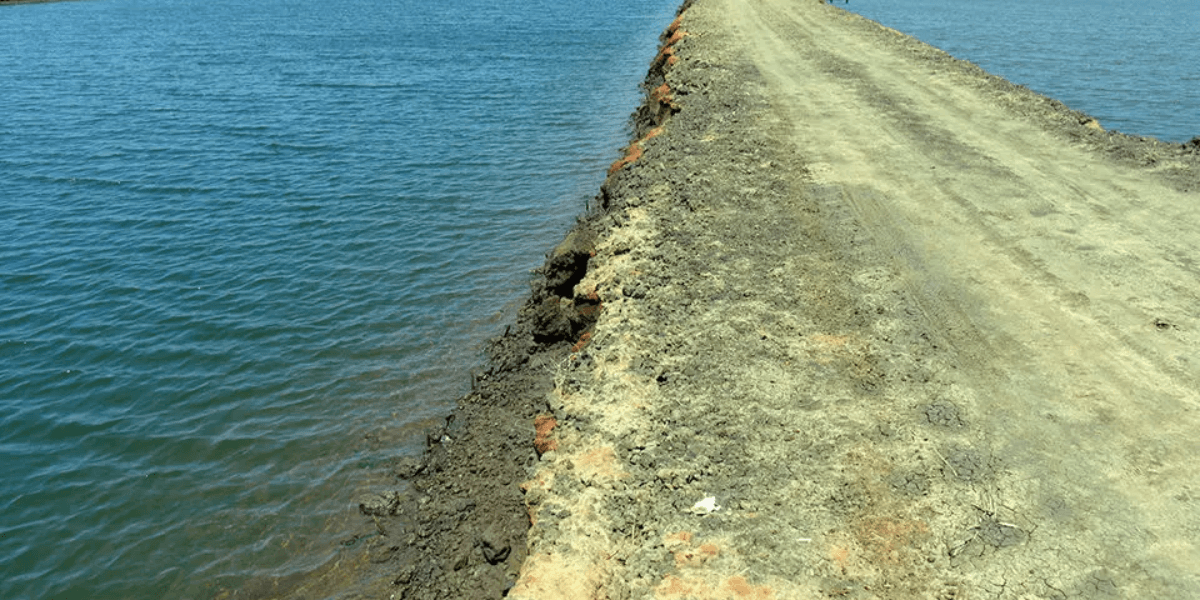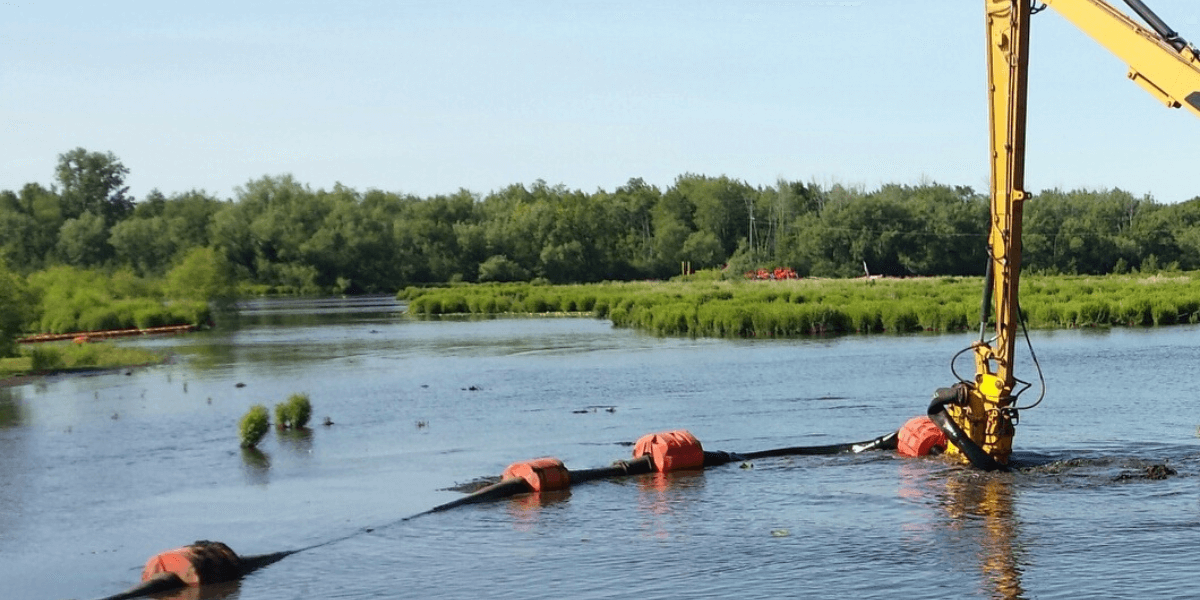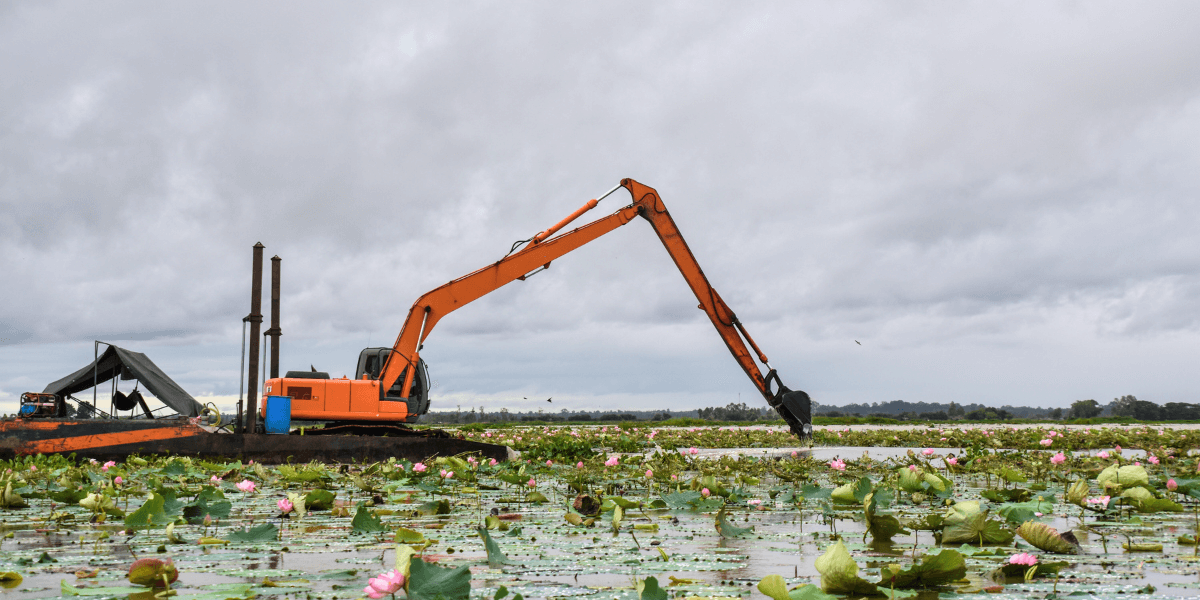1 min read
The Importance Of Dredging
When most people think of dredging, they picture heavy equipment scooping sediment from the bottom of a river or harbor. And while that's part of the...

There was a time when waterways were navigable, beaches pristine, and ecosystems thrived without intervention—but today, ensuring these conditions requires deliberate and strategic action. Massive machinery now continuously scoops tons of sediment and materials from rivers, lakes, ports, harbors, and waterways, addressing critical environmental and infrastructural demands.
While some dredged materials must be carefully managed due to environmental contaminants, a large portion presents remarkable opportunities. These opportunities not only protect and enhance our natural environment but also drive innovation and safety across sectors such as construction, agriculture, engineering, and industrial operations, profoundly shaping our landscapes and communities.
Below, we go deeper into how U.S. Aqua Services has identified and championed some of the most impactful uses of dredged materials, showcasing their significance, versatility, and sustainable value across diverse industries.
The construction industry is experiencing unprecedented growth globally, driven by population increases and urban expansion. Sand and gravel extracted from dredging activities play essential roles in construction projects, significantly benefiting building and infrastructure development. These materials form foundational elements in creating concrete, asphalt, and glass, essential in residential, commercial, and infrastructure construction projects. Engineering firms routinely integrate dredged aggregates to enhance project sustainability and cost efficiency. Moreover, these materials support landscaping, drainage systems, and foundational fills, particularly in coastal or waterfront developments.
Landfills require careful engineering and management to prevent environmental contamination and maintain public safety. Dredged materials, especially gravel and compacted sediments, effectively cover landfill waste, containing odors and preventing erosion. These materials act as a protective barrier, keeping waste securely in place and preventing hazardous runoff from seeping into groundwater and local ecosystems. Engineering applications for landfill cover prioritize safety and long-term environmental protection, ensuring surrounding communities remain unaffected by potential contamination.
As coastal populations rise, communities face increased flooding risks from sea-level changes and storm surges. Using dredged materials for land creation offers an innovative solution to expand coastal regions safely. Large-scale engineering projects frequently employ dredged sand and sediment to form artificial islands and shore extensions, particularly in densely populated or economically critical regions. For example, the oil and gas industry has leveraged such land reclamation to create stable drilling platforms and infrastructure bases, enhancing operational efficiency and safety in offshore environments.
Coastal communities rely significantly on beaches for recreation, tourism, and local economies. Storms, erosion, and human activities constantly threaten these valuable shorelines. Dredged materials offer an effective solution through beach nourishment projects, actively replenishing eroded sand and stabilizing coastal zones. Engineering teams strategically redistribute sand to restore beaches, protect coastal properties, and bolster tourism. These projects help maintain the safety and vitality of local economies while preventing further environmental degradation.
Sustaining fertile topsoil remains crucial for agriculture's future and global food security. Dredged sediments, rich in nutrients and minerals, significantly enhance soil quality when applied as topsoil fertilizer. Farmers use these nutrient-dense sediments to replenish exhausted soil, boosting crop yields sustainably. Furthermore, dredged materials reduce the need for chemical fertilizers, promoting environmentally friendly farming practices and improving long-term soil health.
Habitat restoration is essential for maintaining biodiversity and ecological balance in waterways and wetlands. Environmental engineers frequently utilize dredged materials to rebuild damaged ecosystems by creating new habitats or restoring existing ones. Collaborations between dredging companies and wildlife agencies, including Fish and Wildlife departments, have successfully restored habitats for fish spawning grounds, bird nesting areas, and natural vegetation growth. Strategically placed sediments also create protective barriers, helping ecosystems withstand extreme weather events and improving overall environmental resilience.
Dredging makes a big difference in keeping our environment clean, helping engineers build safely, and boosting local economies. Whether your project involves building new roads and homes, working in the oil and gas industry, helping farmers, or fixing natural habitats, partnering with a trusted dredging company ensures things are done right, safely, and quickly. At US Aqua Services, we use advanced equipment, have skilled engineers, and follow strict safety rules to get the job done exactly how you need it.
Contact US Aqua Services today to schedule a site visit or learn more about dredging solutions designed specifically for your project’s success.

The Importance Of Dredging - In this blog post, we will discuss the importance of dredging and some of its benefits.
Understanding Beach Reclamation and Sand Dredging - Beach reclamation can be generally understood as the process of restoring a beach from erosion. Sand is added to the beach to “reclaim” its shoreline.
What Is Gravel Used For? - What is all of this gravel being used for? Let's explore the usefulness of these pea-sized rocks.
U.S. Aqua Services was created to support the dredging process in advancing commerce and responding to its many challenges. To accomplish this, our dredging company assembled an exceptional group of experienced individuals and a diverse inventory of dredge equipment.
We offer dredging equipment rental services so you can have access to the latest and greatest in dredging technology without having to pay to maintain it, transport, and store it, along with dewatering services.
With an emphasis on mobility, dependability, durability, diversity, efficiency, and safety, our dredging rental company can ensure that our different types of dredging systems are easy to move through any terrain and can work in the most rugged and remote environments. Our multi-function hydraulic systems are built with jetting and mechanical options that can efficiently move loose sediment or stiff layers of clay.
US Aqua services also and maintains a ready fleet of amphibious equipment capable of completing dredging projects in some of the harshest and most remote environments. U.S Aqua is also the dealer for Louisiana of the amphibious vehicle Fat Truck. No matter the size or scope of the job or the remoteness of your work location, you can rely on Fat Truck’s industrial off-road utility vehicles to get the job done right.

1 min read
When most people think of dredging, they picture heavy equipment scooping sediment from the bottom of a river or harbor. And while that's part of the...

Living near a body of water may raise concerns about dredging operations and their impact on property values and the ecosystem. Dive into this...
When it comes to dredging, the age-old debate of hydraulic vs. mechanical dredgers has experts and industry insiders divided. These two giants of the...